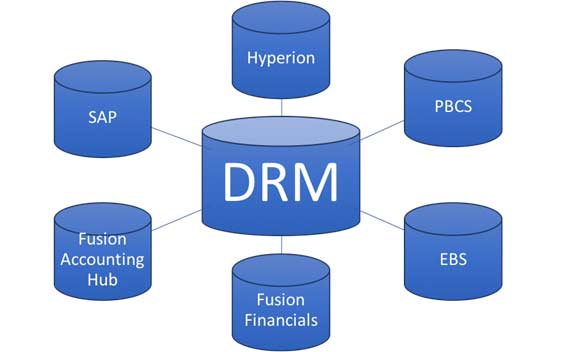Data has become a critical asset for businesses across various industries. To harness the full potential of this valuable resource, companies must prioritize effective data relationship management. This approach enables organizations to maximize their business value by enhancing data quality, improving efficiency, and facilitating informed decision-making. In this blog post, we will delve into the benefits of skillful data relationship management and explore key components to ensure optimal business performance.
Table of Contents
What is Data Relationship Management?
Data relationship management refers to the process of organizing, maintaining, and enhancing the relationships between different data sets within an organization. This crucial aspect of data management ensures that the information used to drive business operations and decisions is accurate, consistent, and reliable. By investing in efficient data relationship management, organizations can unlock new levels of performance and value creation.
Benefits of Skillful Data Relationship Management
Enhanced Data Quality
One of the most notable advantages of effective data relationship management is the improvement in data quality. With accurate and consistent data, organizations can reduce errors and inconsistencies that might hinder their ability to make informed decisions. Research has shown that businesses with robust data relationship management practices experience significantly higher levels of data quality, which translates to more reliable insights and actions.
Improved Efficiency
Efficient data relationship management can also lead to increased operational efficiency. By streamlining data integration processes and facilitating seamless data sharing and collaboration, organizations can save time and resources while improving their ability to leverage data for decision-making. Case studies from various industries have demonstrated that businesses that prioritize data relationship management can achieve significant efficiency gains, contributing to increased value and competitiveness.
Informed Decision-Making
Lastly, effective data relationship management empowers organizations to make better-informed decisions. Ensuring access to relevant and reliable data allow companies to drive insights and actions that contribute to improved performance and growth. Several examples of successful businesses demonstrate that leveraging data relationship management can lead to more informed decision-making and ultimately, greater business value.
Key Components of Data Relationship Management
To reap the full benefits of data relationship management, organizations must focus on several key components, including data consistency, simplified data governance processes, and streamlined data integration.
Data Consistency
This is vital for organizations to maintain the accuracy and reliability of their information. When data is consistent, organizations can be confident that the information they use for decision making is correct. To achieve data consistency, organizations must implement strategies for managing data relationships. This includes ensuring that data is entered consistently, using common naming conventions, and establishing relationships between data elements to keep data organized and easy to understand. This helps to minimize the risk of errors and conflicts, which can negatively impact decision making processes.
Simplified Data Governance Processes
Data governance plays an essential role in data relationship management, as it establishes the policies, procedures, and standards that govern how data is used, maintained, and shared. By implementing effective data relationship management practices, businesses can simplify their data governance processes, reducing the complexity and time required to manage data while increasing the overall business value.
Streamlined Data Integration
Data integration is often a challenging task, as organizations must combine information from multiple sources into a unified and usable format. Efficient data relationship management can streamline this process, enabling companies to quickly and easily integrate data sets and maximize their value. With techniques to improve data integration through data relationship management, businesses can unlock new opportunities for growth and success.
Implementing Data Relationship Management Best Practices
To ensure the success of their data relationship management initiatives, organizations should focus on implementing best practices in the following areas:
Establishing Clear Data Management Policies
Data management policies and procedures are the building blocks of a successful data relationship management initiative. Having a clear understanding of roles, responsibilities, and standards helps organizations establish a strong foundation for effective data management. When developing these policies, businesses need to take into account important considerations such as data quality, privacy, and security to make sure their practices are aligned with both their goals and any legal requirements.
Effective data management is crucial for the success of any organization. By clearly defining the policies and procedures for managing data, businesses can create a solid foundation for managing their data relationships. These policies should take into account factors such as data quality, privacy, and security, to ensure that the organization’s practices meet both its objectives and any legal requirements. Having well-defined data management policies and procedures is essential for organizations to effectively manage their data and achieve their goals.
Investing in Employee Training and Development
The success of data relationship management often hinges on the knowledge and skills of the individuals responsible for managing data relationships. Investing in employee training and development can significantly improve the effectiveness of your organization’s data management efforts. Consider offering workshops, seminars, and online resources to educate employees on data management best practices and provide them with the tools they need to succeed as data relationship managers.
Continuously Monitoring and Improving Data Relationships
Implementing efficient data relationship management is not a one-time effort; it requires ongoing evaluation and improvement to ensure that your organization continues to benefit from accurate, consistent, and reliable data. Develop strategies for monitoring and assessing your data relationship management practices, identifying areas of improvement, and implementing changes as needed. By embracing a continuous improvement mindset, your organization can maintain a high level of data quality and harness the full potential of its data assets.
Effective data relationship management is essential for maximizing business value in today’s data-driven landscape. By focusing on enhancing data quality, improving efficiency, and facilitating informed decision-making, organizations can unlock the full potential of their data assets and achieve new levels of success. To ensure optimal results, businesses should prioritize data consistency, streamlined data governance processes, and efficient data integration while implementing best practices in data management policies, employee training and development, and continuous improvement. Through these strategies, your organization can harness the power of data relationship management to drive performance, growth, and value creation.








